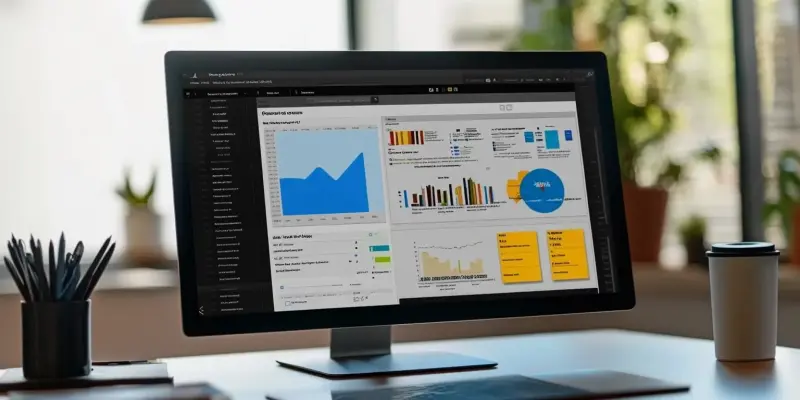Power BI is a powerful tool for data visualization and analysis, but its alerting capabilities are somewhat limited. By integrating Power BI with Microsoft Power Automate, you can extend these alerts to notify others when certain conditions are met. This integration allows for a more proactive approach to data monitoring, ensuring that key stakeholders are informed in real-time about significant changes or milestones. Before we dive into the specifics of setting up this integration, it is essential to understand the basic requirements and numerous use cases where these enhanced alerts can add significant value.
Requirements for Using Power BI Alerts
To leverage Power BI alerts effectively, there are a few prerequisites you need to be aware of. Firstly, alerts can only be established through the Power BI online portal, meaning you won’t be able to set them up on the desktop version or report server. This limitation requires that users have access to the online platform to create and manage their alerts. Another important point is that alerts are only visible to the user who sets them up, even if the dashboard is shared with other team members. Thus, it is crucial that those setting alerts communicate with their team about the alerts they have configured.
Additionally, alerts function solely on numeric data types and can be applied to numeric or gauge tiles. This means that text or categorical data cannot trigger alerts, narrowing the scope to numerical data like sales figures, metrics, and financial ratios. Furthermore, the alerts are only useful for data sourced from streaming datasets connected to a live data source. Only data that gets refreshed will activate alerts, so the datasets need to be in a continuous refresh cycle to ensure the alerts are timely and relevant.
Use Cases for Power BI Alerts
There are several scenarios where integrating Power BI alerts can offer substantial benefits. One common use case is financial monitoring, where businesses can track general ledger balances for cash reserves, expenses, debt levels, and income streams. Setting alerts for financial ratios or specific numerical thresholds can help financial teams act promptly to changes in economic conditions. Another vital application is customer and vendor evaluation. By monitoring total customer credit, accounts payable, accounts receivable, and the number of orders, businesses can maintain better control over their credit risk and operational workflows.
Operational metrics are another area where Power BI alerts can immensely help. Businesses can receive alerts for outstanding shipments, pending receipts, and approval backlogs. Such notifications help keep the workflow moving smoothly and ensure that delays are addressed promptly. Lastly, setting up alerts for goals and milestones ensures that teams are immediately informed when sales targets or other critical objectives are reached. These alerts can drive immediate actions and celebrations within teams, keeping everyone motivated and aligned.
Setting Up Alerts in Power BI
Creating an alert rule in Power BI is a straightforward process. First, navigate to your Power BI dashboard and click on the ellipsis (…) on the numeric tile you wish to set an alert for. Then, select “Manage alerts” and add an alert rule where you specify the condition, such as setting a threshold above 700,000. Once the rule is established, it will monitor the data and trigger alerts when the conditions are met.
It should be noted that the frequency of data refreshes will impact how quickly alerts are triggered. The refresh frequency depends on your Power BI license. For instance, demonstration environments refresh every 24 hours, base licenses can refresh up to eight times daily, and professional licenses can refresh up to 48 times daily. Understanding this refresh cycle is critical to ensure that your alerts are timely and reflective of the latest data.
Integrating with Power Automate
Power BI is a robust tool designed for data visualization and in-depth analysis, yet its built-in alerting features have certain limitations. By integrating Power BI with Microsoft Power Automate, you can significantly enhance these alerting capabilities. This integration facilitates automatic notifications to key stakeholders whenever specific conditions are met within your data sets. As a result, it supports a more proactive data monitoring strategy, ensuring that important changes or milestones are communicated in real-time. Understanding this integration’s basic requirements and numerous use cases is crucial before diving into the setup process. Such enhanced alerts can be particularly valuable in various scenarios, such as sales tracking, monitoring financial metrics, and keeping tabs on project progress. This method not only augments the alerting functionality of Power BI but also ensures that critical information is delivered promptly and efficiently, empowering stakeholders to make informed decisions quickly.

